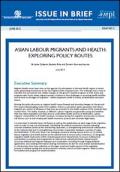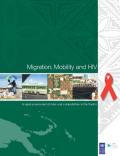Publications on Migrants
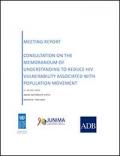
Resource | Publications,
The Asian Development Bank (ADB) and the UNDP Asia-Pacific Regional Centre jointly convened this 2012 Consultation on the Memorandum of Understanding to Reduce HIV Vulnerability Associated with Population Movement, in order to formulate concrete national, bilateral and subregional activities to address the challenges faced by migrants and mobile populations in this area.

Resource | Publications,
This Project Briefing explores the experiences of these people as they migrate, drawing on findings from a baseline study on their vulnerabilities, particularly to HIV and AIDS, as they move between their communities of origin in Nepal and Bangladesh to India. Although the baseline used quantitative and qualitative approaches, stories of harassment and violence emerge mostly from the qualitative elements.
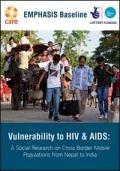
Resource | Publications,
This report presents the findings of a baseline study carried out in India and Nepal for CARE's Enhancing Mobile Population’s Access to HIV & AIDS Services, Information and Support (EMPHASIS) program. This program seeks to reduce the vulnerability of mobile populations to HIV & AIDS along two mobility routes between Bangladesh and India and Nepal and India. The objectives of this study were to understand the vulnerabilities faced by mobile populations by exploring the volume, pattern and drivers of mobility.
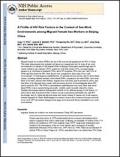
Resource | Publications,
This study demonstrates how multiple risk factors are situated and vary by types of sex work environments in a sample of 348 migrant FSWs in Beijing. Participants reported high rates of clients' refusal to use condoms (76%), unsafe sex with both clients (32%), non-paid regular partners (e.g., boyfriend or husband) (76%), and a STI symptom (79%) last year.
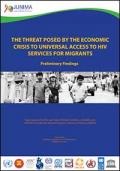
Resource | Publications,
The objective of this paper is to give an overview of the potential impact of the current crisis on migrant and mobile populations in Southeast Asia, and assess how the likely increase in unsafe mobility with its accompanying risks and vulnerabilities for HIV transmission will affect the health of people on the move.
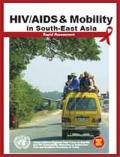
Resource | Publications,
This document presents the key findings and recommendations of a rapid assessment conducted on HIV and mobility issues in the 10 ASEAN Member Countries in 2007-2008. It includes the migration patterns and HIV situation across the region, and the challenges and opportunities facing South-East Asian countries as they work together to develop a comprehensive response to HIV for migrant and mobile populations.
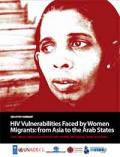
Resource | Publications,
The Arab States are the primary destinations for many migrant workers from various countries in Asia, including Bangladesh, Pakistan, the Philippines, and Sri Lanka. Of these migrants, many are women: in 2005, 59 percent of Sri Lankan migrant workers were women, of which 90 percent were domestic workers, largely in the Arab States. Since 2000, women have comprised 90 percent of yearly deployment of new hires for service workers in the Philippines, of which 30 percent are employed as domestic help.






